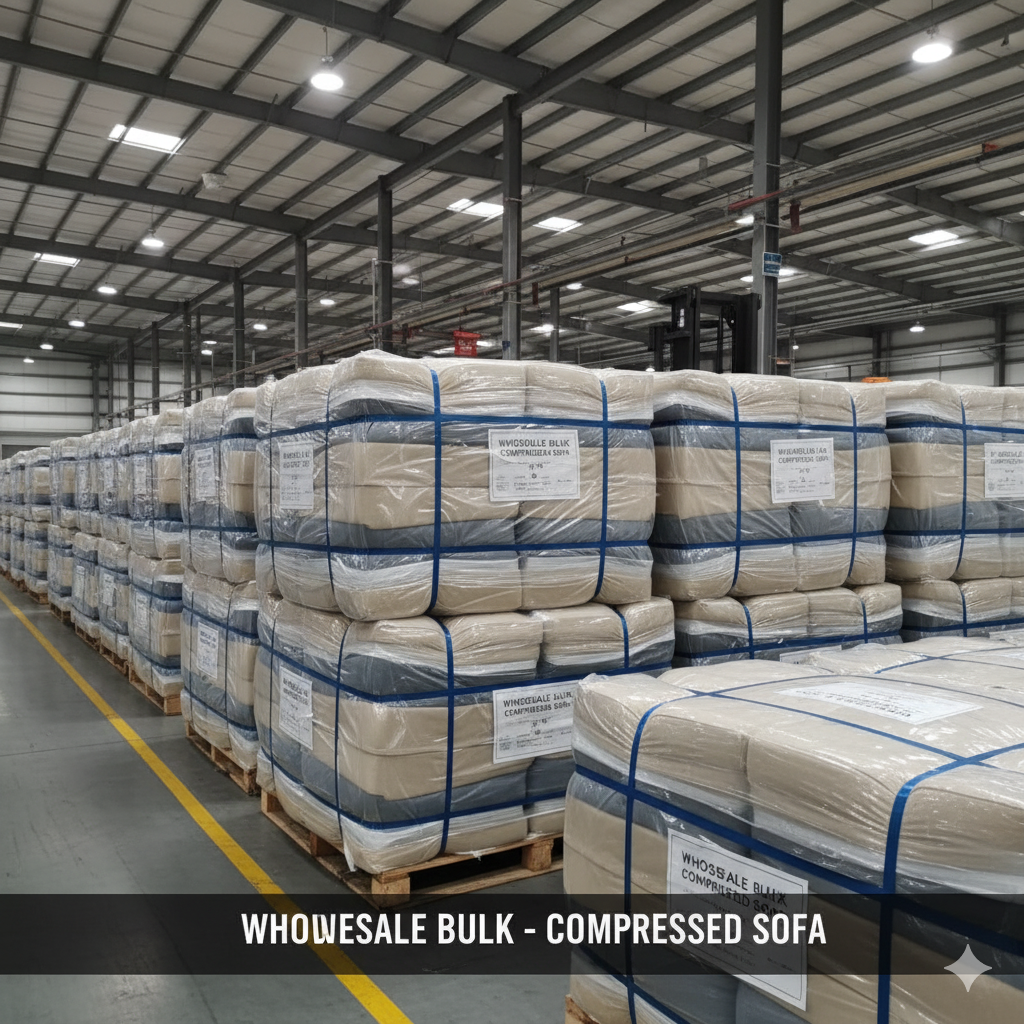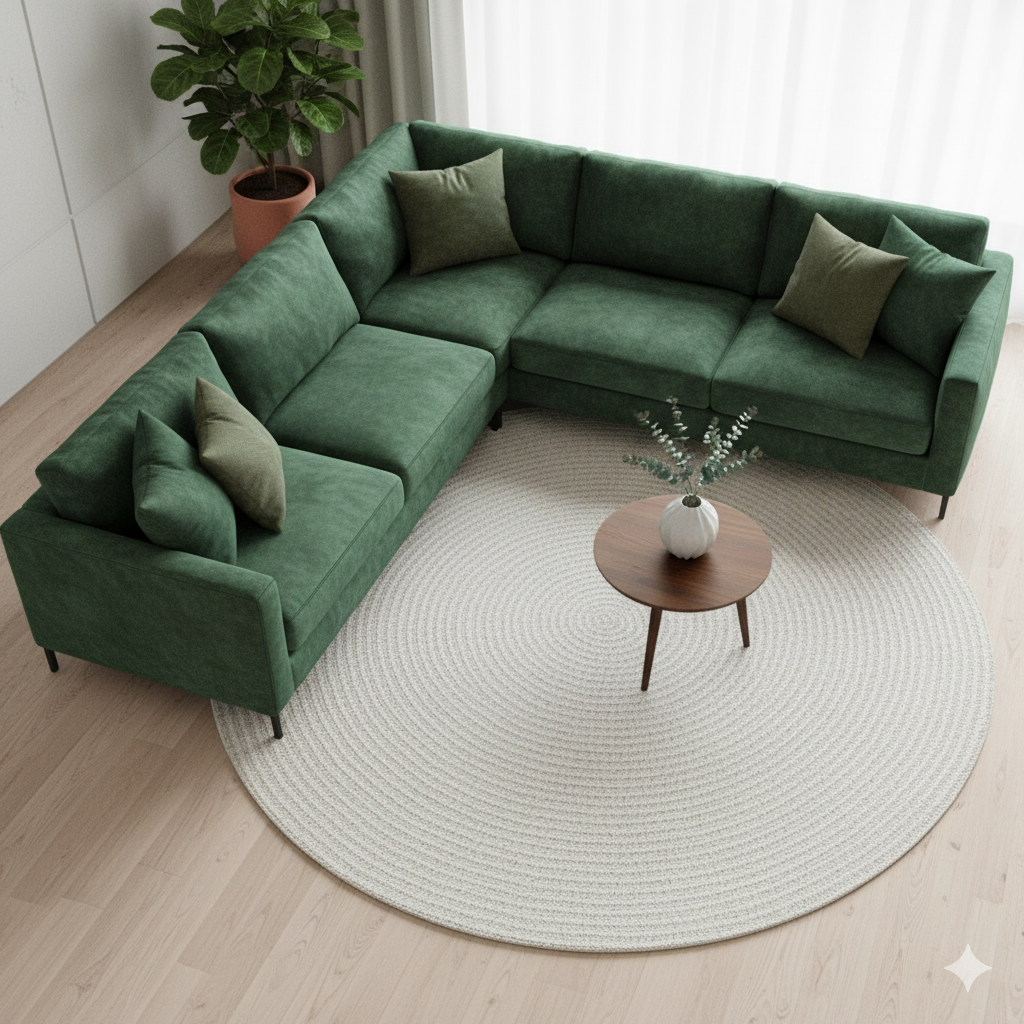
Compressed Sofa Supplier: Delivering Efficiency Through Compact Design
The Overlooked Costs of Conventional Sofa Supply
Traditional sofas take up large container volumes and drive significant freight expenses. Storage becomes equally inefficient, requiring expanded warehouse capacity for bulky units. Beyond logistics, inconsistent product quality and limited design adaptability create recurring problems:
-
Escalating Freight Bills: High container usage inflates per-unit costs.
-
Storage Pressure: Large-volume goods reduce warehouse turnover efficiency.
-
Design Limitations: Lack of flexibility in size and materials restricts adaptability to diverse environments.
It is within this context that compressed sofa suppliers provide a more efficient, technically advanced solution.
Compression Technology as a Competitive Edge
Modern compressed sofa supply is built around vacuum-packing and roll-packing systems. By shrinking sofa volume by 40–60%, suppliers address both freight and storage concerns. The process is reinforced with engineered foams and resilient frames that recover seamlessly upon unpacking.
Technical features include:
-
Vacuum Sealing Films: Multi-layer packaging protects against moisture and transit impact.
-
Foam Recovery Cycles: Tested repeatedly to ensure comfort and durability post-compression.
-
Structural Engineering: Lightweight yet reinforced frames withstand long-distance transport stresses.
This integration of technology ensures efficiency without sacrificing long-term usability.
Comparing Conventional vs. Compressed Sofa Supply
| Factor | Conventional Sofa Supply | Compressed Sofa Supplier Solutions |
|---|---|---|
| Freight Volume | Full size, costly shipping | 40–60% reduction with vacuum packing |
| Storage Efficiency | Bulky, limited capacity | Compact, higher warehouse turnover |
| Product Adaptability | Limited models and fabrics | OEM customization in design and finish |
| Quality Consistency | Varies across shipments | Multi-stage testing for durability |
| Operational Flexibility | Slower lead times | Scalable, automated supply processes |
Operational Value Across the Supply Chain
The role of a compressed sofa supplier extends beyond manufacturing. It is about enabling measurable value throughout procurement:
-
Logistics Optimization: Reduced freight and warehousing costs.
-
Design Integration: Custom materials, finishes, and branding incorporated directly into production.
-
Regulatory Assurance: Compliance with international durability and fire-retardant standards.
-
Lifecycle Gains: Extended product lifespan reduces after-sales costs and supports long-term planning.
By addressing these core areas, compressed sofas turn from simple furniture pieces into strategic operational assets.
Industry Questions Answered
Q1: How reliable is the compression process?
A: Recovery-cycle testing ensures sofas maintain shape and comfort after extended compression periods.
Q2: Can packaging be customized?
A: Yes. OEM compressed sofa suppliers provide branding, labeling, and documentation aligned with project needs.
Q3: What materials are typically used?
A: Options include multi-density foams, kiln-dried hardwood, and lightweight steel frames for enhanced strength.
Q4: How does compression affect delivery schedules?
A: Compression reduces handling complexity, often shortening overall lead times.
The Strategic Role of Compressed Sofa Supply
Compressed sofa suppliers are not only solving logistics challenges but also setting new benchmarks for efficiency, compliance, and adaptability. By combining vacuum-packing innovation with OEM flexibility, they reshape how global furniture supply chains function.
At CV Castle, we integrate advanced compression technology, OEM customization, and strict quality assurance into every product. Our expertise ensures sofas are delivered compactly, efficiently, and reliably.
Discover more about our solutions on the homepage or connect directly with us via the contact page to explore tailored supply options.






